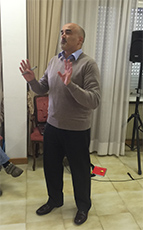Under the 2014-2020 cohesion policy, Interreg Europe is aimed at ‘sharing solutions for better regional policies’, being part of the European Territorial Cooperation objective of the regional policy of the EU (‘cohesion policy’).
The whole Programme is structured around four themes (Priority Axes), chosen among the 11 Thematic Objectives that establish a logic link between the “Europe 2020” strategy and interventions co-financend by European Structural and Investment Funds:
• research and innovation,
• SME competitiveness,
• low-carbon economy,
• environment and resource efficiency. [1]
The third call was opened on 1st March and the deadline is set on 30 June 2017. [2]
Co-financing rates are set as follows:
• 85% of the total eligible cost for public bodies and bodies governed by public law from all the EU partner states;
• 75% of the total eligible cost for private non-profit bodies from all the EU partner states. [3]
Two relevant caveats of the 3rd Call should be taken into close consideration:
• the terms of references highlights that many projects financed under the previous call for proposals are related to Priority Axis 1 (Research) and Priority Axis 2 (Enhancing competitiveness of SMEs). Accordingly, eligible applicants are advised to submit innovative projects related to Priority Axes 3 (low-carbon economy) and 4 (environment and resource efficiency). The call stresses that only 20% of projects approved to date concern Priority Axis 4. In particular, ‘important topics such as renewable energy or water management are so far poorly represented among the 130 approved projects’; [4]
• the main objective of the Interreg Programme is to promote and delivery better territorial policies by favouring the exchange of best practices among public authorities (especially the local ones). Accordingly, to be eligible for financial support, at least half of the project partners must be involved on Structural Funds operational programmes.
*************
[1] The ‘logical framework’ of Interreg Europe Programme is structured as follows:
- Priority Axes (corresponding to Thematic Objectives 1, 3, 4 and 6 of European Structural and Investment Funds),
- Investment Priorities,
- Specific Objectives.
For a wider presentation of this Programme, see my previous post ‘European Cooperation Day. Celebrating Interreg’ published on 15 September 2016.
[2] All the proposals will be evaluated against eligibility and quality criteria (two-step assessment procedure). Quality criteria are grouped into two categories:
- strategic assessment criteria (relevance of proposals, quality of expected results, quality of partnership),
- operational assessment criteria (coherence of the proposal and quality of approach, communication and management, budget and finance).
[3] It has to be taken into account that Norway and Switzerland are full members of the Programme, but organizations from these countries are not eligible to ERDF funds.
For further information, documents and other links visit: http://www.interregeurope.eu/apply
Also, see the third call promotional video: https://www.youtube.com/watch?v=u9FkAloWJGE.
[4] A useful post about the 3rd call was published on the Programme’s portal on 12th April (Building an application. 5 top tips for success).
This post underlines that ‘130 projects have already been approved by the programme. This means that, as a new applicant, you must check whether projects in similar thematic areas were already approved in the first and second call…. make reference to the existing and past projects in the application form in order to explain to us the innovative character of your proposal‘.


